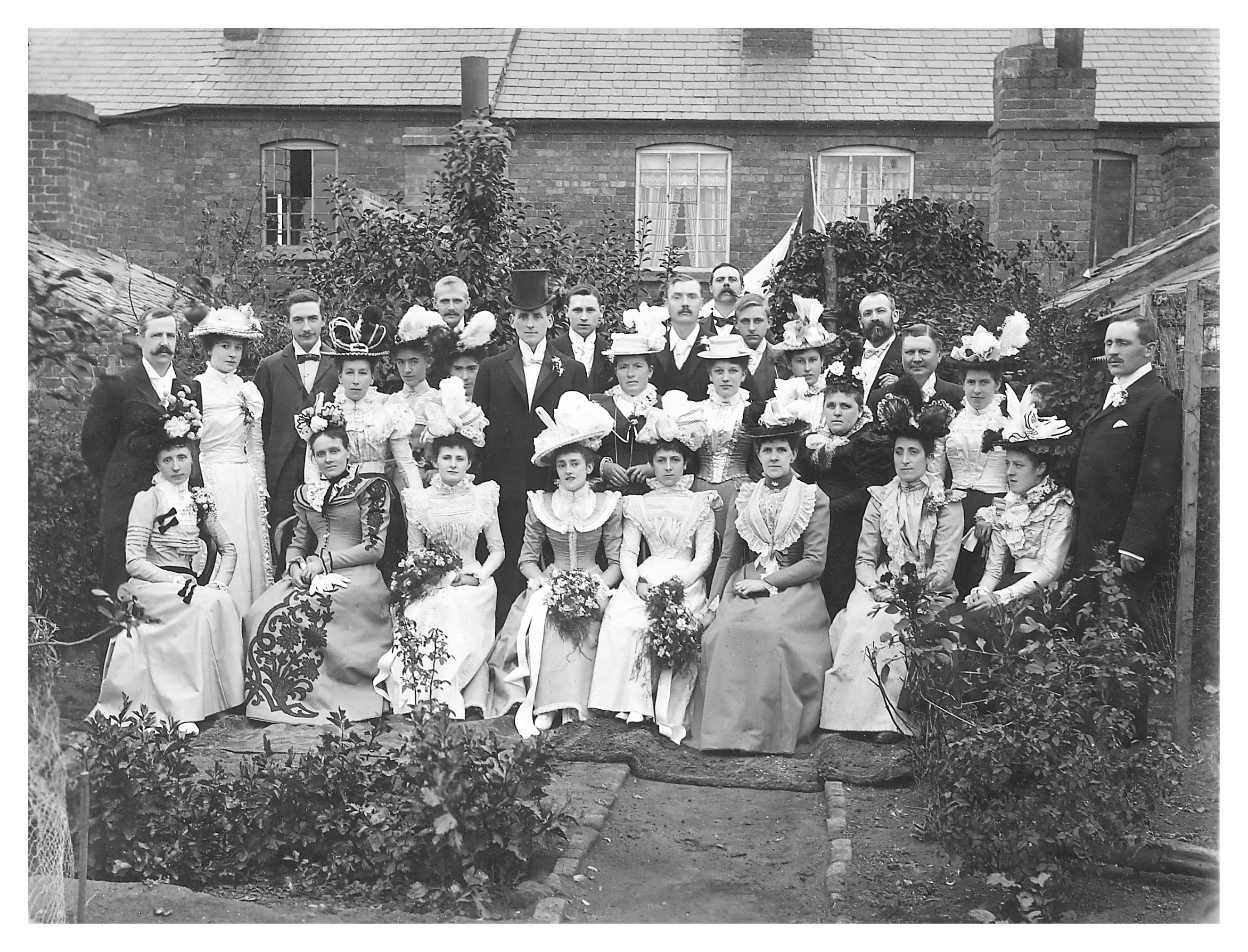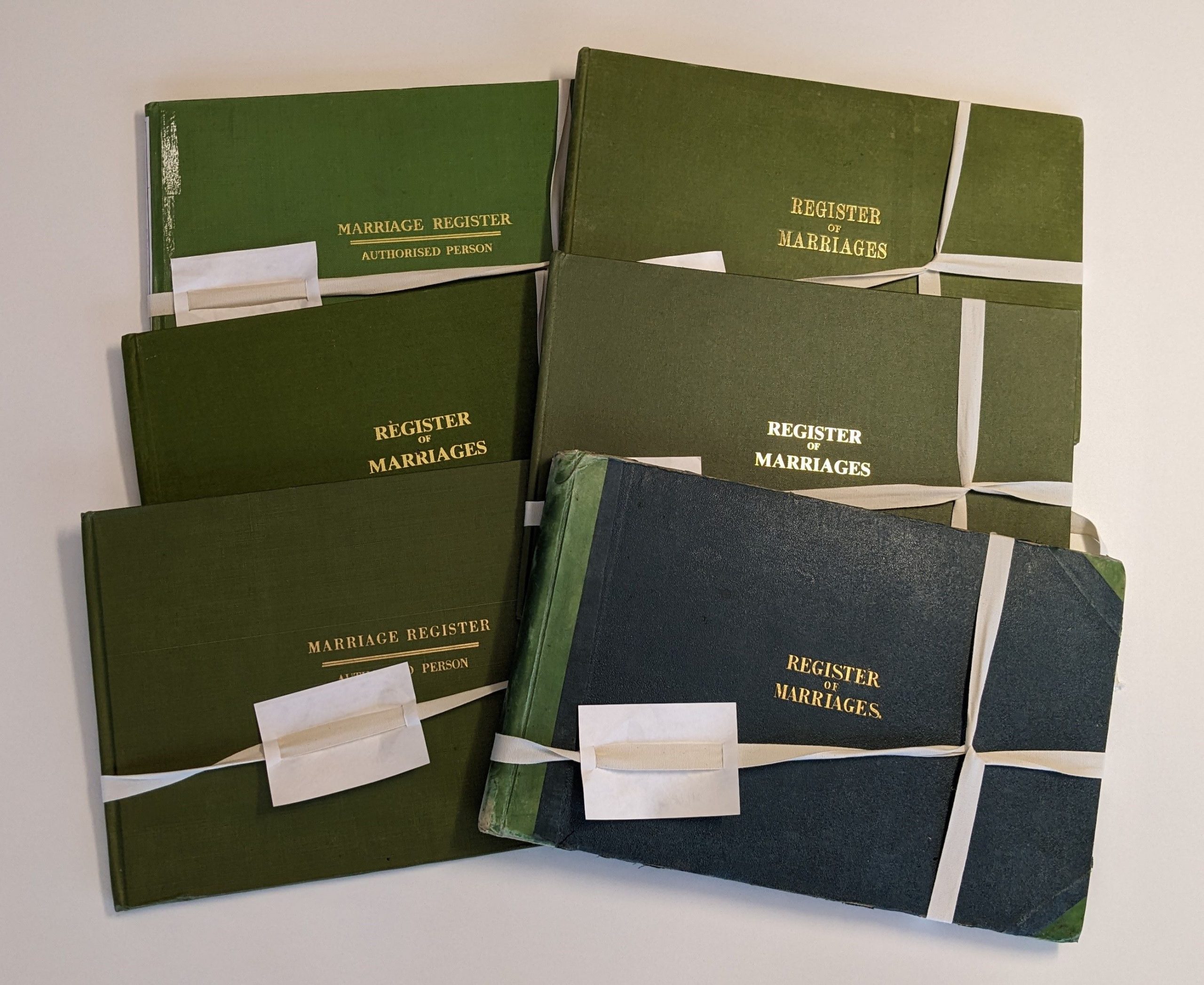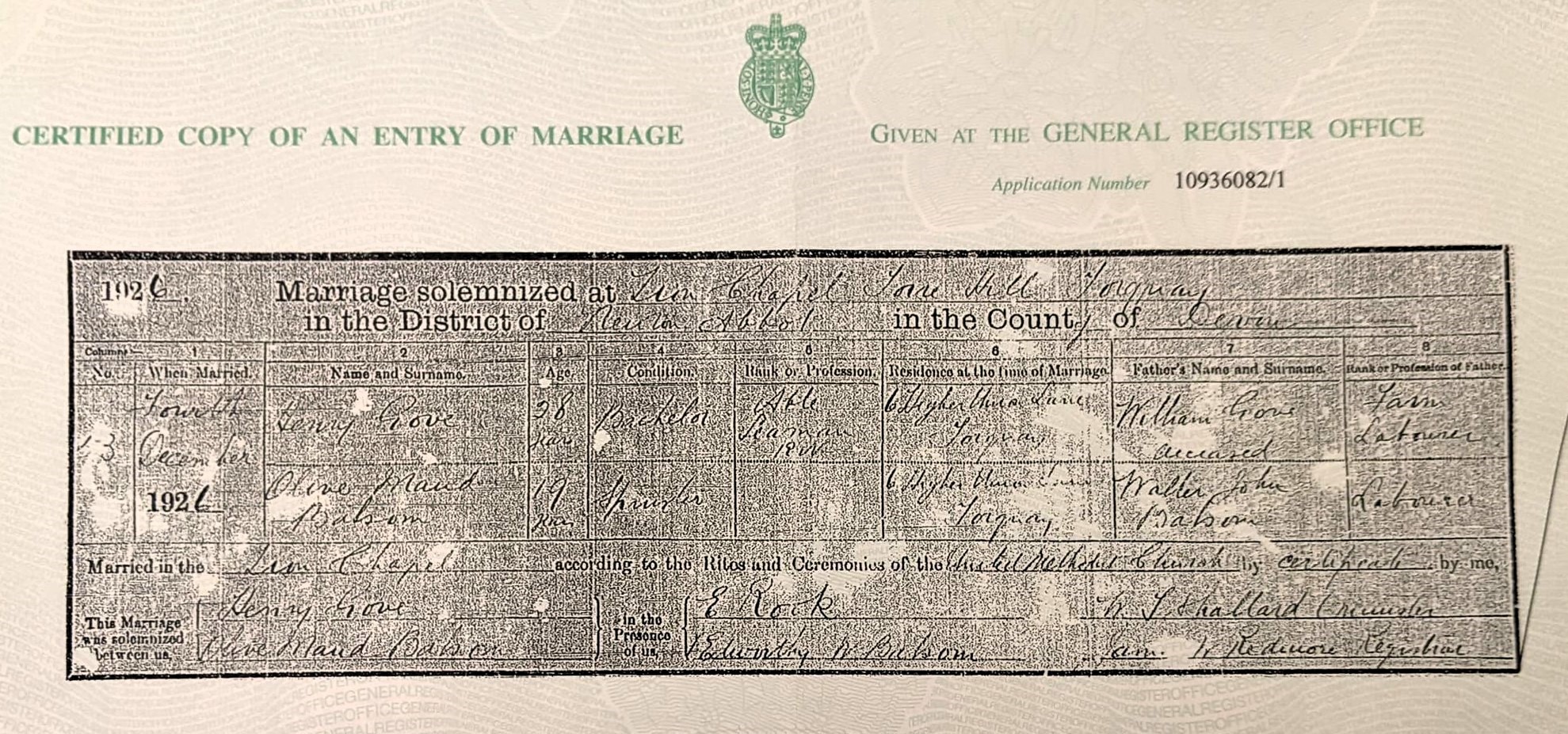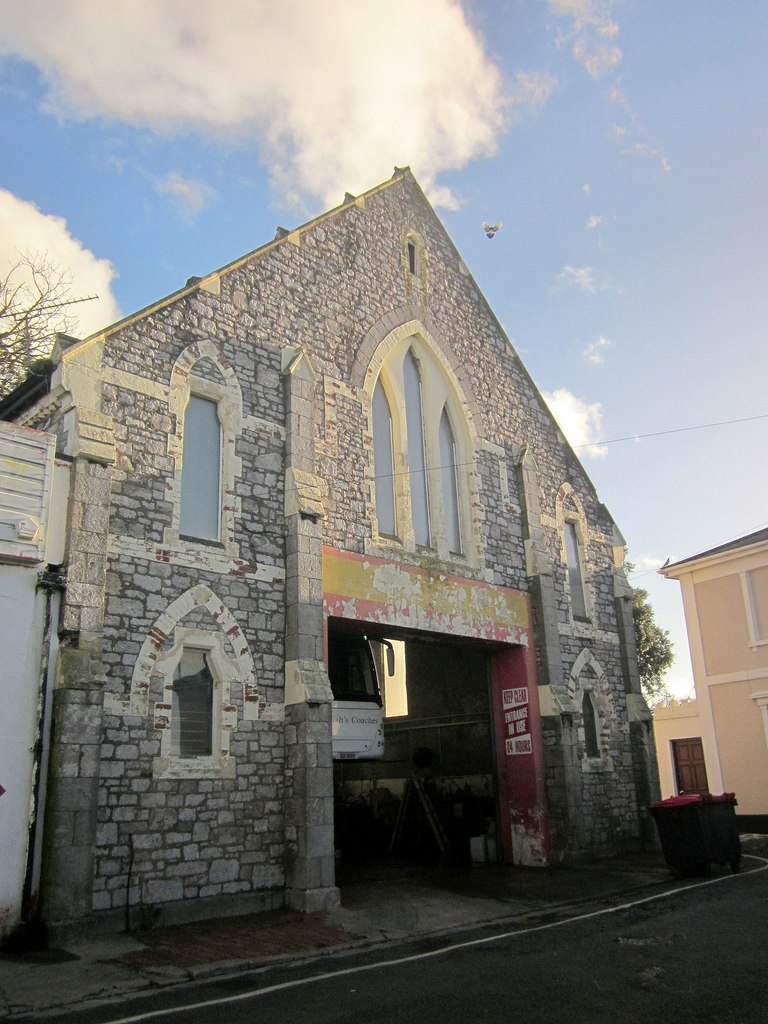Marriage Registers at The Hive
- 21st October 2024
The latest records catalogued as part of the New Burdens project are duplicate copies of marriage registers held on behalf of the Worcestershire Registration Service. In this blog we explain the General Register Office (GRO) and how Birth, Marriage and Death certificates held by the GRO can help you trace your family history.
Amongst the varied public records being catalogued as part of the New Burdens project are duplicate marriage registers held on behalf of the Worcestershire Registration Service. The Registration Service, which recently moved to The Hive, is responsible for the registration of births, marriages and civil ceremonies, citizenship, the change of name by deed poll and the registration of deaths. More information about the services they provide can be found here. This statutory service is delivered on behalf the General Register Office (GRO) for England and Wales. The GRO maintains the national archive of all births, marriages and deaths dating back to 1837 and you can learn more here.
Scotland and Ireland have separate, but similar systems.
 Wedding Party dressed in their finest at Finding No: b899.31 BA3762.164
Wedding Party dressed in their finest at Finding No: b899.31 BA3762.164
Duplicate marriage registers, along with other registration records are held in our archive and on behalf of the Registration Service locally. The duplicates are the parish or denominational copies. Whilst the main series of births, marriages and deaths registers aren’t publicly available, we have copies of the National GRO BMD Index (births, marriages and deaths) available on microfilm up to December 2004. There is also access to Ancestry® via public access computers at The Hive which can be used to search the GRO Index.
 Worcestershire Marriage registers held on behalf of the Registrar General recently catalogued at Finding No: b004.0301 BA15987 © WAAS
Worcestershire Marriage registers held on behalf of the Registrar General recently catalogued at Finding No: b004.0301 BA15987 © WAAS
Using the GRO Index for Family History
Alongside the census, certificates of birth, marriage and death ordered from Civil Registration are a key source for family historians. These are important because they provide details about people such as names, dates, places, occupations and family members and give clues as to where to look next. With the help of these certificates, you should be able to trace your family back into the nineteenth century.
Birth Certificates – All births have to be registered by the parents although for the first few years it was down to the Registrar to locate and record, so omissions or mistakes were made. The certificates provide the name of child, date of birth, parents names including mother’s maiden name (really useful for going back that next step), where the birth took place and where they lived. Sometimes people only purchased a short birth certificate which only gives the child’s name, date of birth, place of birth and gender. The full copy is still available to purchase from the GRO.
Marriage Certificates – give the date of wedding, full names, ages, marital status, occupations, address and father’s name and occupation for both bride and groom. The location of wedding and names of witnesses are also given.
Death Certificates – provide the name of the deceased, date and cause of death, the address, and the name and address of the informant. Often these provide little more information than what is already known although they are useful if there is a suspicion of an unusual death or other details need corroborating.
Here is an example of the information held on a Marriage Certificate from the author’s Great Grandfather, Henry Gove to his wife Maud Olive Balsom on 4th December 1926.
 Marriage Certificate for Henry Gove & Maud Olive Balsom on 4th December 1926 © Crown Copyright
Marriage Certificate for Henry Gove & Maud Olive Balsom on 4th December 1926 © Crown Copyright
As explained, it gives:
• Wedding Date: 4th December 1926
• Groom: Henry Gove
• Bride: Maud Olive Balsom
• Age: Henry 28 / Maud 19
• Condition: Henry Gove – Batchelor / Maud Olive Balsom – Spinster
• Profession: Henry’s is listed as Able Seaman RN (Royal Navy) / Maud’s is left blank.
• Address: 6 Higher Union Lane, Torquay
• Father’s Name and Surname: Henry – William Gove / Maud (Walter John Balsom)
• Rank or Profession of Father: William Gove – Farm Labourer / Labourer
• Location of Marriage: Zion Chapel, Torre Hill, Torquay according to the Rites and Ceremonies of the Unionist Methodist Chapel.
You can learn about how to order Birth, Marriage and Death certificates here and the link to Worcestershire Registration Service’s certificate ordering service is here.
From this information, it is possible to trace family members back, both on the Census and further use of the GRO Index. It also helped to confirm that the author’s ancestors were Methodist and married in Torquay. Whilst the marriage was over 100 years ago, it is also possible that the building itself may still survive, albeit perhaps changed somewhat. A search for the Zion Chapel at Torre Hill, Torquay, reveals that the building does still survive and its history is summarised here. An image of the chapel is shown below and it has since been used for commercial purposes as a garage in sharp contrast to its earlier use.
 Zion Chapel, Torre Hill. Now a garage and tyre depot, described as the ‘Former chapel, Torre’ available at https://www.geograph.org.uk/photo/4306942> © CC BY-SA 2.0
Zion Chapel, Torre Hill. Now a garage and tyre depot, described as the ‘Former chapel, Torre’ available at https://www.geograph.org.uk/photo/4306942> © CC BY-SA 2.0
The GRO Index is an incredibly valuable resource for family historians and researchers, allowing them to trace family members back to 1837. Prior to 1837, ancestors living in Worcestershire can be traced via parish registers. Worcestershire Archive and Archaeology Service, in its role as Diocesan Record Office, holds parish registers for Worcestershire dating from the mid-16th century onwards. The church registers contain records of Baptism, Marriage and Burial services and are available on microfilm at The Hive (see the handlist here) and also via Ancestry® as explained here. We also have Marriage Register indexes covering the period 1660-1837.
A future blog will discuss the role of the coroner’s service as part of the Worcestershire Registration Service.
Post a Comment